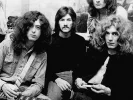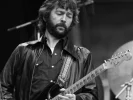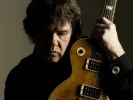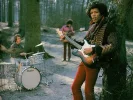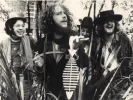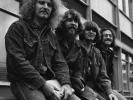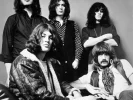Visión de conjunto
Blues rock is a fusion genre combining elements of blues and rock. It is mostly an electric ensemble-style music with instrumentation similar to electric blues and rock. From its beginnings in the early- to mid-1960s, blues rock has gone through several stylistic shifts and along the way inspired hard rock, Southern rock, and heavy metal. Blues rock continues to be an influence, with performances and recordings by several popular artists.
Blues rock started with rock musicians in the United Kingdom and the United States performing American blues songs. They typically recreated electric Chicago-style blues songs, such as those by Muddy Waters, Jimmy Reed, Howlin' Wolf, and Albert King, at faster tempos and with a more aggressive sound common to rock. In the UK, the style was popularized by groups such as the
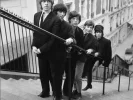 Rolling Stones, the
Rolling Stones, the
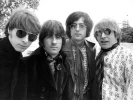 Yardbirds, and the Animals, who managed to place blues songs into the pop charts. In the US, Lonnie Mack, the Paul Butterfield Blues Band, and
Yardbirds, and the Animals, who managed to place blues songs into the pop charts. In the US, Lonnie Mack, the Paul Butterfield Blues Band, and
 Canned Heat were among the earliest exponents and "attempted to play long, involved improvisations which were commonplace on jazz records". John Mayall & the Bluesbreakers and Peter Green's Fleetwood Mac also developed this more instrumental, but traditional-based style in the UK, while late-1960s/early 1970s groups, including Ten Years After, Savoy Brown, and Foghat became more hard rock oriented. In the US, Johnny Winter, the
Canned Heat were among the earliest exponents and "attempted to play long, involved improvisations which were commonplace on jazz records". John Mayall & the Bluesbreakers and Peter Green's Fleetwood Mac also developed this more instrumental, but traditional-based style in the UK, while late-1960s/early 1970s groups, including Ten Years After, Savoy Brown, and Foghat became more hard rock oriented. In the US, Johnny Winter, the
 Allman Brothers Band, and
Allman Brothers Band, and
 ZZ Top represented a hard rock trend.
ZZ Top represented a hard rock trend.
Although around this time, AllMusic commented, "the lines between blues rock and hard rock were barely visible", there was a return to more blues-influenced styles. In the 1980s, the Fabulous Thunderbirds and Stevie Ray Vaughan, recorded their best-known works and 1990s saw guitarists Gary Moore, Jeff Healey, and Kenny Wayne Shepherd become popular concert attractions. Groups, such as the Jon Spencer Blues Explosion and the
 White Stripes, brought an edgier, more diverse style into the 2000s, as do contemporary artists
White Stripes, brought an edgier, more diverse style into the 2000s, as do contemporary artists
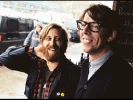 the Black Keys.
the Black Keys.
 FM
FM
